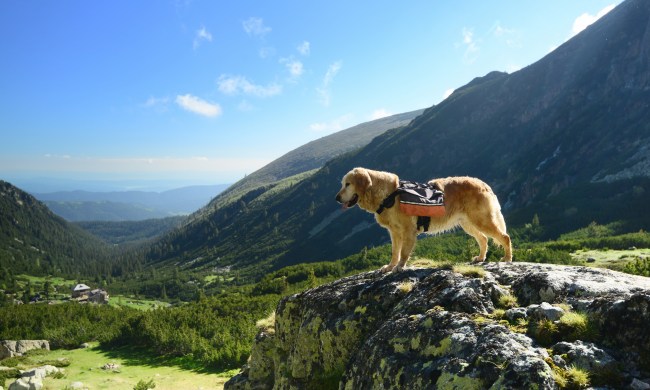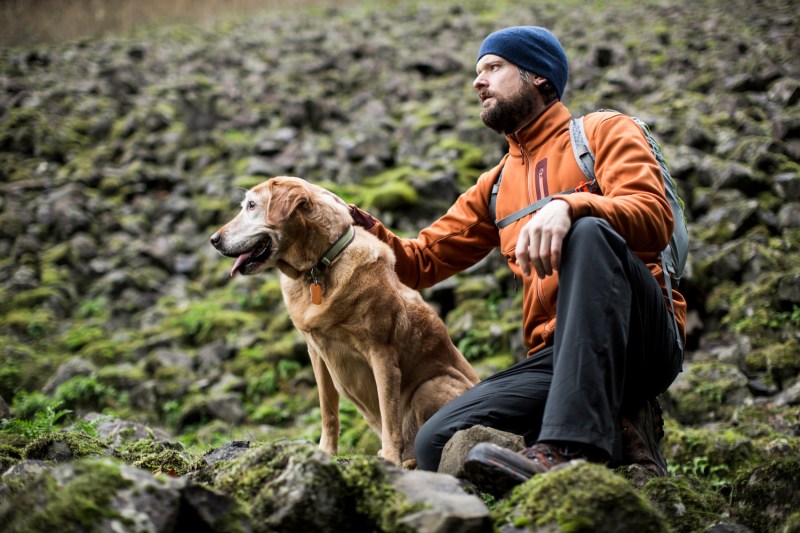
Dogs are almost always up for an adventure – and they can be the best hiking buddies for many outdoor adventurers. Most pups love nothing better than exploring a scent-laden trail – and expanding their horizons. Besides just burning energy, a hike can be an enriching way to spend time bonding with your dog and to practice training. Best of all, dogs almost never complain.
Before hitting the trail with your four-legged adventure sidekick, there are a few things to consider to be sure your dog stays safe.
Related Guides
Consider Your Dog’s Comfort Level
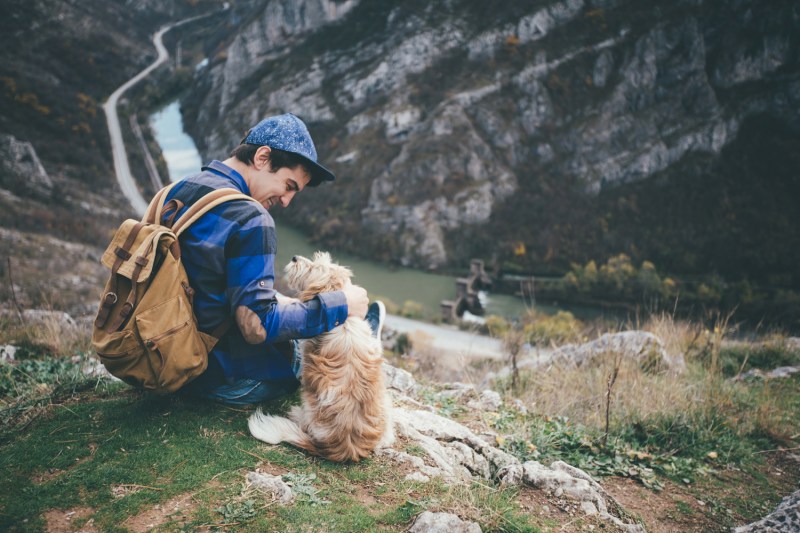
Some pups were born to run – and seem to have almost endless stamina – especially herding dogs, hunting dogs, and of course, even many garden-variety mutts. On the other hand, some pups are homebodies, and would rather take a leisurely stroll in the neighborhood. In particular, Brachycephalic breeds, or dogs with shorter heads, like bulldogs, pugs, and Boston terriers, can also be vulnerable to breathing issues due to the shape of their throats and muzzles.
And, while trail time can be restorative for older mutts, senior dogs may also need a more limited outdoor itinerary to compensate for aging joints and reduced energy levels. Overweight dogs can also have a tough time on strenuous treks, so if you have a pudgy pup, ease into hiking with some shorter outings before upgrading to trickier trails.
Don’t forget to consider your dog’s disposition, too. The great outdoors can be intimidating for some pups – especially high-strung dogs, posh pooches accustomed to a more urban lifestyle, or recently adopted rescues with little socialization. If necessary, start with a few easy hikes to build confidence before tackling wilder treks.
Bring Plenty of Water and Snacks
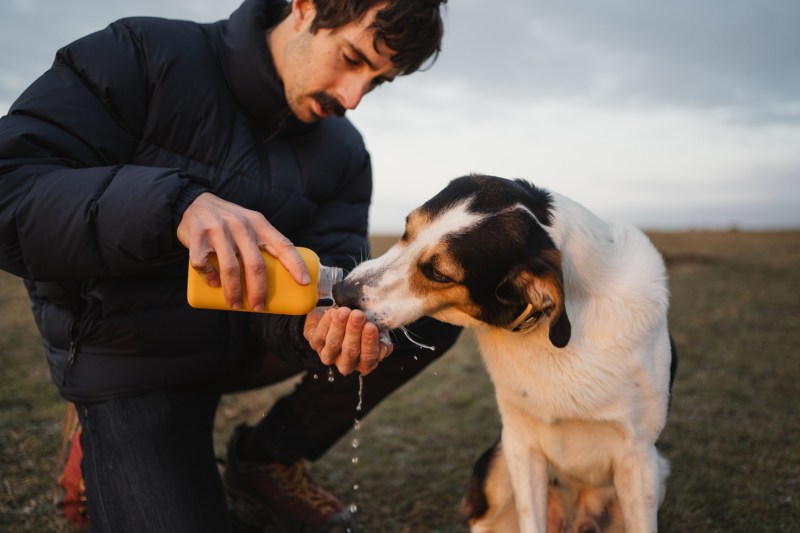
Just like humans, dogs will need more food and water when their activity level is increased. So, for long days on the trail, or overnight backpacking trips, adjust your dog’s feeding to account for the additional calories burned. Of course, enticing treats are always handy too, especially for training overly exuberant pups.
When packing water, bring more than your pup will need. Water bowls are prone to spilling on uneven trailside terrain, and pups can be messy drinkers. While out for a hike, give your four-legged buddy plenty of opportunities to hydrate to reduce the chance of your dog drinking from water sources along your route. Trailside streams or ponds can contain harmful chemical toxins or parasites like giardia and coccidia, which can cause intestinal infections.
Read More: Best Water Filters and Purifiers
Be Aware of Wildlife

Encounters with wildlife can be one of the highlights of a hike, but having a dog on the trail can change things. If you have any doubts about keeping your dog under control on the trail, use a short leash to prevent any sticky situations with trailside fauna. Dogs can be a disturbance to wildlife – and can be perceived as a nuisance or a threat, which can trigger aggression and lead to potentially prickly encounters with moose in rut, territorial coyotes, or bears with cubs. Off-leash pups can also run into less-conspicuous but potentially harmful creatures, too, like scorpions or venomous snakes.
Be Mindful of Potential Trail Hazards
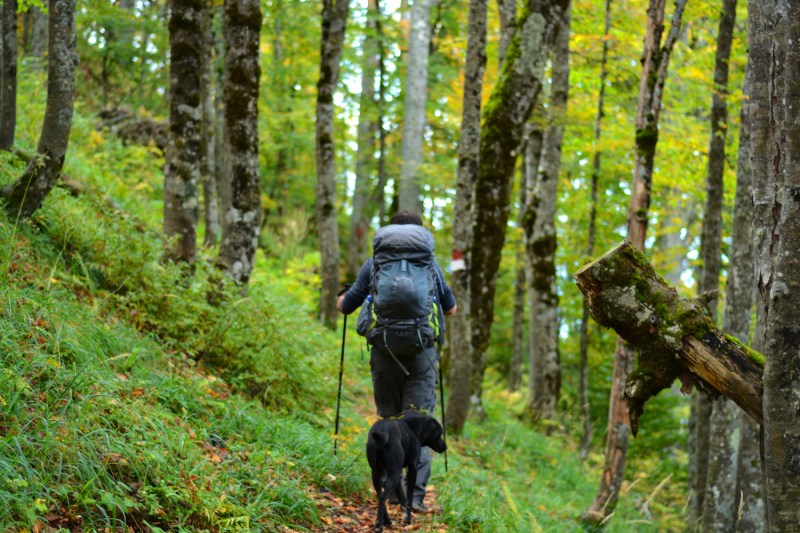
Hiking is a rewarding way to spend time outdoors with your favorite pup, but on any trail, there can be factors that can be hazardous to dogs. Consider the terrain – rugged and rocky routes can wear on your dog’s paws. Trailside vegetation, like thorn bushes or grasses with foxtails, or plants with spiny burrs, can also irritate your dog’s paw pads, which can lead to infection. Additionally, sometimes the oils from poisonous plants like poison ivy (Toxicodendron radicaus or Toxicodendron rydbergii), poison oak (Toxicodendron diversilobum), or poison sumac (Toxicodendron vernix) can irritate the skin of dogs with threadbare coats. And, in some instances, your dog’s coat can also transmit oils from poison plants to your skin. In the case of a run-in with poisonous plants along the trail, it’s handy to have a reliable cleaner like Tecnu’s Original Outdoor Skin Cleanser to remove rash-inducing oils from your skin.
Temperature extremes can also be a big hazard for pups on the trail. Dehydration and overexertion are both major factors to consider during warm weather hikes – so if possible, pick a route with a water source where your dog can cool off for a bit. Additionally, sun-seared surfaces like sand or stone can damage your pup’s paws. For summer hikes, stashing a few instant cold packs in your first aid kit can be helpful if you need to cool an overheated dog on the trail. At the other extreme, long treks in snowy or icy conditions can also cause paw pads to chaff or crack. Paw salves or waxes, like Musher’s Secret Dog Paw Wax, can help protect your pooch’s feet in snow and ice, and moisturize weather-battered paw pads.
Read More: Best Dog Hiking Gear
Pack a First Aid Kit
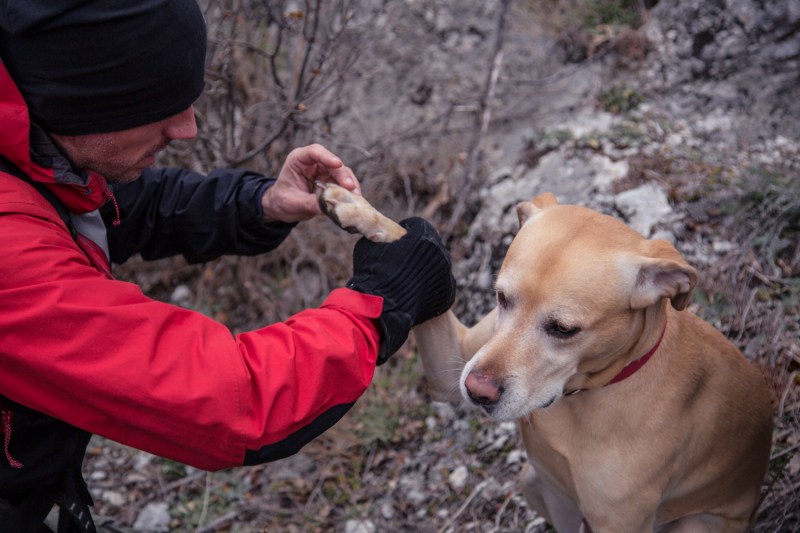
In the great outdoors, pups can be prone to injury, too, whether it’s a scraped paw pad, a sprain, or a stomach bug. Pack a simple first aid kit with a few staples to treat common trail injuries – especially damage to paws. In particular, stock your kit with essentials like tweezers for removing ticks or burrs that become burrowed in paw pads, a pet-safe antihistamine for allergic reactions, gauze, and non-stick bandages for cuts, and a dog-safe antiseptic cleaner for cuts.
Consider Bringing a Few Extra Safety Accessories
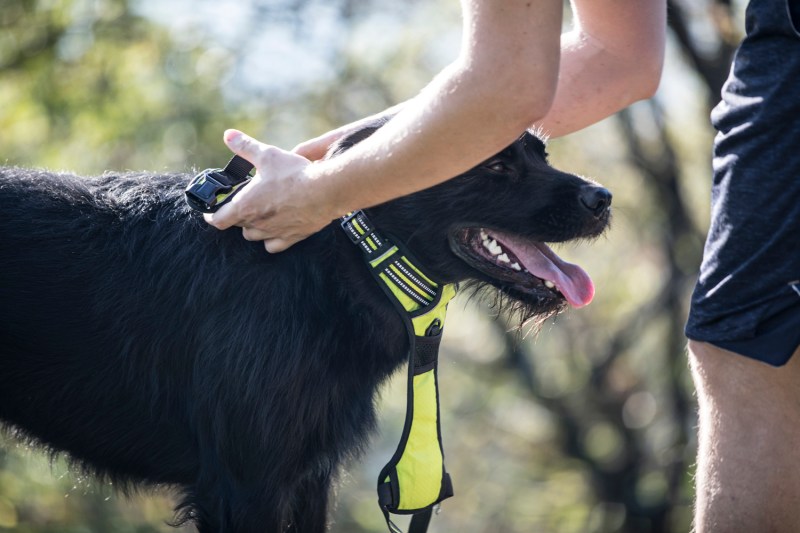
Depending on your destination, there are a few extra safety accessories to consider to keep your four-legged adventure buddy safe on the trail. In areas where hunting is allowed, be sure to use a neon safety vest for your pup to ensure your dog is visible on the trail. For hikes in low light, for instance at sunrise or sunset, attaching a light to your dog’s collar or harness can also be handy to help make your pup more visible in case you get separated – and will make your mutt easier for other hikers, bikers, or runners to spot.
For some pups, a harness can be handy to have on the trail. A sturdy harness, especially models designed for hiking like Ruffwear’s Web Master Harness or Kurgo’s Journey Dog Harness offers multiple leash attachment points, and can provide added control for pups who tend to be overstimulated in the great outdoors. Harnesses are also typically harder for a dog to slip out of than a standard collar – and if you need to lift your dog over an obstacle on the trail, a harness with a handle can help you keep a firm grip on your pup.

